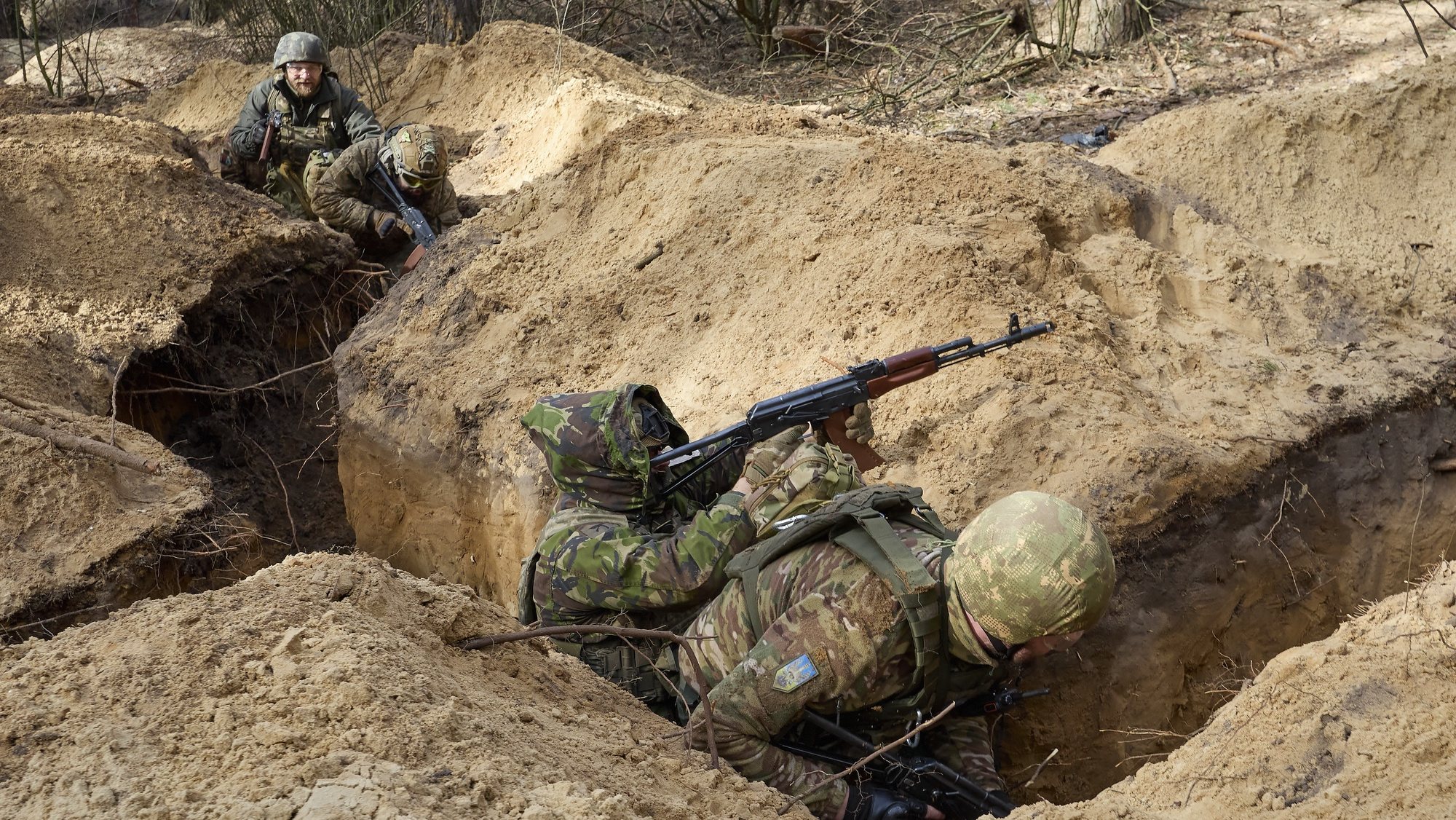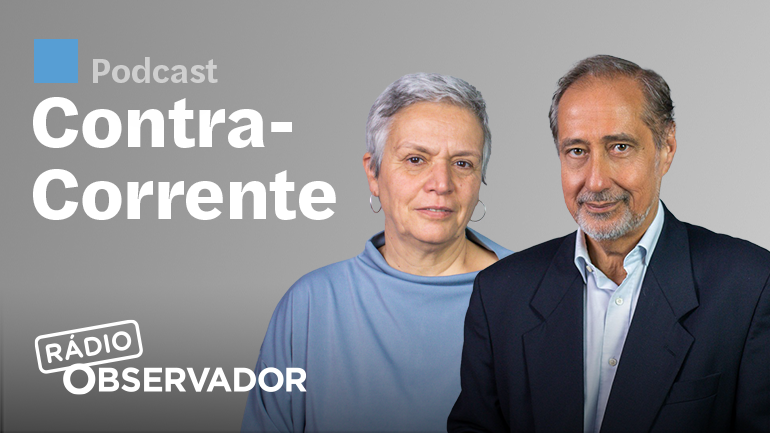O início da intervenção dos EUA no Próximo Oriente data do acordo com o Reino Unido sobre a divisão de petróleo, de 8 de agosto de 1944. Roosevelt foi claro com o Embaixador britânico, resumindo os termos deste acordo:
“Persian oil … is yours. We share the oil of Iraq and Kuwait. As for Saudi Arabian oil, it’s ours.”
Esta equação muito pobre e excessivamente simplificada do posicionamento externo dos EUA face ao Próximo Oriente foi progressivamente enriquecida por sucessivas “doutrinas presidenciais”, que procuraram definir a motivação e a forma como os norte-americanos encaravam os principais desafios globais, sendo aplicáveis direta ou indiretamente ao Próximo Oriente. Eis um resumo das principais doutrinas norte-americanas de política externa.
Truman doctrine, de 12 de março de 1947
Os EUA anunciam como principal objetivo da sua política externa após a II Guerra Mundial continuar a ajudar a libertar o mundo da coação entre os países, sendo essa a finalidade do apoio à criação da ONU: “One of the primary objectives of the foreign policy of the United States is the creation of conditions in which we and other nations will be able to work out a way of life free from coercion. This was a fundamental issue in the war with Germany and Japan. Our victory was won over countries which sought to impose their will, and their way of life, upon other nations. … To ensure the peaceful development of nations, free from coercion, the United States has taken a leading part in establishing the United Nations. The United Nations is designed to make possible lasting freedom and independence for all its members.”
No entanto, a ONU não é suficiente para ajudar os países que estão a ser alvo de agressão direta ou indireta por regimes totalitários: “We shall not realize our objectives, however, unless we are willing to help free peoples to maintain their free institutions and their national integrity against aggressive movements that seek to impose upon them totalitarian regimes. This is no more than a frank recognition that totalitarian regimes imposed on free peoples, by direct or indirect aggression, undermine the foundations of international peace and hence the security of the United States.”
O momento histórico é de escolha entre governos democráticos com eleições livres e liberdades fundamentais, ou regimes totalitários apoiados no terror e opressão: “At the present moment in world history, nearly every nation must choose between alternative ways of life. The choice is too often not a free one. One way of life is based upon the will of the majority, and is distinguished by free institutions, representative government, free elections, guarantees of individual liberty, freedom of speech and religion, and freedom from political oppression. The second way of life is based upon the will of a minority forcibly imposed upon the majority. It relies upon terror and oppression, a controlled press and radio; fixed elections, and the suppression of personal freedoms.”
Em conclusão, resulta dos próprios princípios das Nações Unidas a ajuda aos países livres e independentes para a manutenção da sua liberdade: “In helping free and independent nations to maintain their freedom, the United States will be giving effect to the principles of the Charter of the United Nations.”
Apresentada cerca de dois anos após o fim da II Guerra Mundial, esta doutrina levou à criação do Plano Marshall em 3 de abril de 1948, e da OTAN a 4 de abril de 1949.
A crise do canal de Suez de 1956, em que os EUA fizeram um ultimatum à Grã-Bretanha e França para que retirassem das posições ocupadas ao longo do canal, constituiu um marco decisivo na aplicação da doutrina Truman: os EUA assumiram que esta não se tratava de retórica, aplicando-a inclusivamente contra os seus mais íntimos aliados e defendendo sem ambiguidades um posicionamento anticolonial no Próximo Oriente. A crise de Suez foi de tal forma relevante que é assinalada como tendo significado o fim do papel da Grã-Bretanha como uma das principais potências mundiais.
Eisenhower Doctrine, de 5 de janeiro de 1957
Após a crise de Suez os EUA ficaram sem aliados europeus no Próximo Oriente, o que implicava novas responsabilidades face ao rápido desenrolar dos acontecimentos nessa região e noutras áreas do globo, nomeadamente a intervenção da URSS na Hungria em outubro desse mesmo ano de 1956.
O novo posicionamento dos EUA foi clarificado na Eisenhower Doctrine, baseada nos seguintes pontos:
- Apoio sem reservas à soberania e independência das nações do Próximo Oriente: “The Middle East has abruptly reached a new and critical stage in its long and important history. … since the First World War there has been a steady evolution toward self-government and independence. This development the United States has welcomed and has encouraged. Our country supports without reservation the full sovereignty and independence of each and every nation of the Middle East.
- Oposição firme ao emprego da força agressiva nas relações internacionais: “We have shown, so that none can doubt, our dedication to the principle that force shall not be used internationally for any aggressive purpose and that the integrity and independence of the nations of the Middle East should be inviolate. Seldom in history has a nation’s dedication to principle been tested as severely as ours during recent weeks.
- Reafirmação de que os EUA não buscam o domínio político ou económico de outros povos: “There is general recognition in the Middle East, as elsewhere, that the United States does not seek either political or economic domination over any other people. Our desire is a world environment of freedom, not servitude.
- Reconhecimento do singular papel espiritual do Próximo Oriente: “Then there are other factors which transcend the material. The Middle East is the birthplace of three great religions – Moslem, Christian and Hebrew. Mecca and Jerusalem are more than places on the map. They symbolize religions which teach that the spirit has supremacy over matter and that the individual has a dignity and rights of which no despotic government can rightfully deprive him. It would be intolerable if the holy places of the Middle East should be subjected to a rule that glorifies atheistic materialism.”
- A nível da atuação concreta, a doutrina propõe três fases progressivamente mais comprometidas em apoio da integridade territorial e independência política das nações ameaçadas pelo totalitarismo: apoio económico, assistência militar e, em última instância, emprego das forças armadas norte-americanas: “The action which I propose would have the following features:
– It would, first of all, authorize the United States to cooperate with and assist any nation or group of nations in the general area of the Middle East in the development of economic strength dedicated to the maintenance of national independence.
– It would, in the second place, authorize the Executive to undertake in the same region programs of military assistance and cooperation with any nation or group of nations which desires such aid.
– It would, in the third place, authorize such assistance and cooperation to include the employment of the armed forces of the United States to secure and protect the territorial integrity and political independence of such nations, requesting such aid, against overt armed aggression from any nation controlled by International Communism.”
Seguiram-se várias doutrinas presidenciais, com maior ou menor incidência no Próximo Oriente, das quais se salientam os seguintes aspetos fundamentais:
Kennedy Doctrine, de 20 janeiro de 1961
Antecipando a construção do muro de Berlim em agosto desse ano, constitui uma reafirmação do apoio à luta global contra regimes opressivos e da política anticolonialista norte-americana, para além de propor, pela primeira vez, negociações para controlo de armamento nuclear:
“… Let every nation know, whether it wishes us well or ill, that we shall pay any price, bear any burden, meet any hardship, support any friend, oppose any foe, in order to assure the survival and the success of liberty …”
“To those new States whom we welcome to the ranks of the free, we pledge our word that one form of colonial control shall not have passed away merely to be replaced by a far more iron tyranny….”
“Finally, to those nations who would make themselves our adversary, we offer not a pledge but a request: that both sides begin anew the quest for peace … Let both sides, for the first time, formulate serious and precise proposals for the inspection and control of arms — and bring the absolute power to destroy other nations under the absolute control of all nations”
“Now the trumpet summons us again … [to] a struggle against the common enemies of man: tyranny, poverty, disease, and war itself…”
Nixon doctrine, de 25 de julho de 1969
Preparando a retirada norte-americana do Vietname, estabelece que a responsabilidade principal na luta contra uma agressão cabe ao país ameaçado: “… in cases involving other types of aggression, we shall furnish military and economic assistance when requested in accordance with our treaty commitments. But we shall look to the nation directly threatened to assume the primary responsibility of providing the manpower for its defense.”
Carter doctrine, de 23 de janeiro de 1980
Na sequência da revolução iraniana de 1979 que levou ao poder o islamismo xiita radical, proclama que a rota petrolífera do Golfo Pérsico é vital e será defendida pela força militar, se necessário: “… Let our position be absolutely clear: An attempt by any outside force to gain control of the Persian Gulf region will be regarded as an assault on the vital interests of the United States of America, and such an assault will be repelled by any means necessary, including military force.”
Reagan doctrine, de 23 de março de 1983 e 6 de fevereiro de 1985
Numa alocução televisiva à nação em março de 1983, Reagan propõe que a Mutual Assured Destruction seja complementada por um sistema anti-missil, a Strategic Defense Initiative: “… What if free people could live secure in the knowledge that their security did not rest upon the threat of instant U.S. retaliation to deter a Soviet attack, that we could intercept and destroy strategic ballistic missiles before they reached our own soil or that of our allies? … “
Em fevereiro de 1985, no contexto da intensificação da Guerra Fria, torna lícito o apoio dos EUA a movimentos de libertação que lutam contra governos totalitários: “… We must not break faith with those who are risking their lives … on every continent, from Afghanistan to Nicaragua … to defy Soviet aggression and secure rights which have been ours from birth. Support for freedom fighters is self-defense.”
Clinton doctrine, 26 de fevereiro de 1999
No contexto da Guerra civil jugoslava iniciada em 1991 e do Ruanda de 1994, esta doutrina considera a luta contra o genocídio um interesse nacional norte-americano: “… Genocide is in and of itself a national interest where we should act … we can say to the people of the world, whether you live in Africa, or Central Europe, or any other place, if somebody comes after innocent civilians and tries to kill them en masse because of their race, their ethnic background or their religion, and it’s within our power to stop it, we will stop it.”
Bush Doctrine, 17 de setembro de 2002:
Formulada na sequência dos ataques terroristas de 11 de setembro de 2001, permite guerras preventivas contra potenciais agressores antes de estes se tornarem capazes de arquitetar ataques contra os EUA, o que foi, em parte, empregue como justificativo para a invasão do Afeganistão e a guerra do Iraque de 2003: “America is now threatened less by conquering states than we are by failing ones. We are menaced less by fleets and armies than by catastrophic technologies in the hands of the embittered few. We must defeat these threats to our Nation, allies, and friends.” … The U.S. will “make no distinction between the terrorists who committed these acts and those who harbor them“.
Obama doctrine, de 28 de maio de 2014.
Em contraste com o intervencionismo da presidência anterior, anunciou um retraimento militar externo que foi apelidado de moral multilateralism, defendendo a necessidade de parceria com governos locais e apoio internacional para as intervenções norte-americanas que não forem consideradas essenciais para os seus interesses: “… The United States will use military force, unilaterally if necessary, when our core interests demand it … International opinion matters, but America should never ask permission to protect our people, our homeland, or our way of life.” “… On the other hand, when issues of global concern do not pose a direct threat to the United States … the threshold for military action must be higher. In such circumstances, we should not go it alone. Instead, we must mobilize allies and partners to take collective action. … we must shift our counterterrorism strategy – drawing on the successes and shortcomings of our experience in Iraq and Afghanistan – to more effectively partner with countries where terrorist networks seek a foothold. … to say that we have an interest in pursuing peace and freedom beyond our borders is not to say that every problem has a military solution. Since World War II, some of our most costly mistakes came not from our restraint, but from our willingness to rush into military adventures without thinking through the consequences — without building international support and legitimacy for our action; without leveling with the American people about the sacrifices required.
Aquilo que pode ser considerada a primeira aproximação a uma Trump doctrine consta do discurso proferido passado 8 de janeiro de 2020 no Grand Foyer da Casa Branca, na sequência da operação que provocou a morte do general iraniano Suleiman. Esta doutrina baseia-se na premissa da independência energética dos EUA, um novo pressuposto geopolítico que contrasta fortemente com a anterior premissa do acordo de Roosevelt com o Reino Unido de 1944: “… America has achieved energy independence. These historic accomplishments changed our strategic priorities. These are accomplishments that nobody thought were possible. And options in the Middle East became available. We are now the number-one producer of oil and natural gas anywhere in the world. We are independent, and we do not need Middle East oil.”
Com base nesse pressuposto, a Trump doctrine assenta nos seguintes princípios:
- Firme oposição a que o Irão possua armamento nuclear devido à ameaça que constitui para o resto do mundo: “… As long as I am President of the United States, Iran will never be allowed to have a nuclear weapon … their pursuit of nuclear weapons threatens the civilized world. We will never let that happen.”
- Tolerância zero para com Estados e regimes que apoiam terrorismo: “… Peace and stability cannot prevail in the Middle East as long as Iran continues to foment violence, unrest, hatred, and war. The civilized world must send a clear and unified message to the Iranian regime: Your campaign of terror, murder, mayhem will not be tolerated any longer. It will not be allowed to go forward.”
- Eliminação de líderes considerados terroristas: “… we took decisive action to stop a ruthless terrorist from threatening American lives. At my direction, the United States military eliminated the world’s top terrorist, Qasem Soleimani. As the head of the Quds Force, Soleimani was personally responsible for some of the absolutely worst atrocities.” e “… we killed the savage leader of ISIS, al-Baghdadi, who was responsible for so much death, including the mass beheadings of Christians, Muslims, and all who stood in his way.”
- Multilateralismo a posteriori: “… I am going to ask NATO to become much more involved in the Middle East process.”;
- Disponibilidade para negociações: “… Finally, to the people and leaders of Iran: We want you to have a future and a great future — one that you deserve, one of prosperity at home, and harmony with the nations of the world. The United States is ready to embrace peace with all who seek it.”
Neste discurso, Trump mostrou querer inserir a sua atuação presidencial no contexto das doutrinas dos seus antecessores, e não fazer tábua rasa do trabalho desenvolvido pelos EUA desde o final da II Guerra Mundial para ganhar credibilidade junto dos países do Próximo Oriente, nem aproveitando a situação internacional para resolver problemas internos. Com efeito, houve analistas que consideraram que a escalada no conflito com o Irão se destinava a proporcionar uma “distração” do processo de “impeachment”.
Nem sempre a atuação dos EUA foi coerente com as doutrinas aplicáveis em cada momento, mas estas também não se podem considerar simples peças de retórica destinadas a branquear interesses globais. São documentos históricos que demonstram a intenção e a vontade de compreender e enquadrar situações de grande complexidade e mobilidade, cujo conhecimento contribui para uma visão informada e crítica dos acontecimentos internacionais.
Hoje em dia há uma circunstância nova que, por si só, modificou profundamente a forma de encarar o Próximo Oriente pelos norte-americanos: ao contrário da Europa, os EUA deixaram de depender das importações de petróleo. Isto significa que a ponderação dos países árabes para a equação norte-americana do Próximo Oriente decresceu muito significativamente, o que ficou claramente refletido no novo plano de paz para o conflito israelo-palestino, apresentado recentemente pelo presidente Trump.
A interrogação que persiste no Próximo Oriente diz respeito ao papel da Rússia, que a implosão da URSS fez sair da órbita do “atheistic materialism” a que se referia Eisenhower, e passar a fazer parte de um dos três intervenientes da equação espiritual da região. O ano de 2015 marcou o regresso da Rússia ao Próximo Oriente, com o apoio a Bashar al-Assad na guerra civil síria, que tudo indica sairá vitorioso do conflito. Convém à Rússia aproximar-se da Turquia, que ainda pertence à OTAN, para consolidar o seu regresso à região. O episódio da aquisição turca do sistema russo antimíssil S-400 constituiu um trunfo do qual a Rússia aproveitou extensivamente.
Por sua vez a Turquia, enredada na equação curda, tem negligenciado a importância da sua permanência na OTAN para contrariar o peso de uma Síria pró-russa às suas portas. No entanto, o ataque sírio/russo a Idlib de passado dia 27 de fevereiro, em que morreram cerca de 30 soldados turcos e dezenas ficaram feridos, levou a Turquia a desistir do distanciamento da OTAN e solicitar a realização de consultas urgentes no âmbito do art. 4º do Tratado do Atlântico Norte. Não podia recorrer ao art. 5º, que prevê que um ataque a uma das partes seja considerado um ataque a todas, porque Idlib não está situada em território turco. Neste contexto, a Síria invoca o direito a recuperar a totalidade do seu território e será difícil impedi-lo porque conta com o apoio russo.
O contexto atual é de escalada de uma situação em que já há dezenas de soldados de um país da OTAN mortos por ataques apoiados por forças russas.
As placas tectónicas geopolíticas do Próximo Oriente estão em movimento, assistindo-se a uma retirada norte-americana e um regresso da Rússia ao seu posicionamento tradicional. Provocarão um terremoto?












